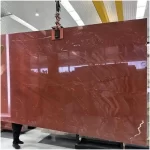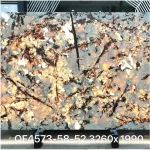According to the general normal situation, the working environment of granite saw blades is relatively harsh. Its main purpose is to cut blades for stone, which is widely used in marble and granite cutting. It is an important processing tool used in the stone industry.
In fact, there are many factors that determine whether the stone material is neat, “beautiful”, many are caused by details that you have not paid attention to during the cutting process, then today, these details will be summarized, these details you have all Noticed?
1. Saw blade idling: Especially when the new substrate is used for the first time, it needs to be idling for about 10-20 minutes, and it needs to be idling with water in the summer high temperature season. Its purpose is to further eliminate the influence of the welding head on the substrate and enhance the saw blade at high speed. Maintain the memory of inner quality while rotating.
2. The cut waste should not be less than 0.5m³ and placed securely. The bottom should be covered with square wood and plugged firmly. The waste should be located on the symmetrical position of the workbench to ensure the stability of the work trolley and the waste. There is shaking and shaking.
3. Adjust the stroke switch according to the length, width, and height of the block, so that the saw blade lift and the stroke of the material truck are within a reliable and effective range. Before sawing, the blade edge of the saw blade should be away from the block by a maximum of 10-20 mm. After sawing, there should be 20-40mm from the saw blade to the bottom of the block. Before the saw blade moves around the blade holder, the saw blade should be completely withdrawn from the saw blade. The distance should not be less than 150-200mm to prevent the blade from hitting the block. material.
4. Trial cutting can only be carried out after the saw blade is idle and stable. The saw blade is not allowed to start when the blade edge is in contact with the block material. The saw blade is not allowed to stop the rotation of the saw blade. It must be withdrawn from the saw blade before stopping.
5. If there is any shaking of the block material during cutting, the cutting should be stopped immediately, and the block material should be fixed firmly before continuing to work. During cutting, the block material is not allowed to move arbitrarily.
6. When cutting, it is found that the saw blade has obvious deceleration or even knife clamping. It may be due to slippage of the belt, loosening of the clamping nut or too deep depth of the knife, and too fast the speed of the knife. It should be adjusted in time. Stone Research Institute stone5A
7. The line speed should be compatible with the hardness and wear resistance of the processed stone. Due to the large variety of granite, the corresponding hardness will also be different. If the stone in a single order is soft, you should tell your saw blade supplier that you are cutting The type of stone, let them provide the corresponding wear-resistant saw blade, on the contrary, if it is hard granite, you need a sharp cutting blade. And if you are cutting a wide variety of stones, you need a corresponding universal blade (Hint: When the online speed is not high, increasing the cutting efficiency will reduce the life of the blade.)
8. The feed speed is mainly determined by the performance of the processed material. For each material, there is a certain range of feed speed when the depth of cut is fixed. If the speed is too high, the diamond will wear out and even fall off, resulting in saw blade consumption If it is too fast, if the speed is too low, the self-sharpening process of the saw blade will not be able to proceed normally, so that it will lose its cutting ability by “blunting and slipping”. In general, the feed speed should be slow when cutting, and should be even when cutting.
9. The cutting depth can be cut through once for medium hardness stones such as marble and limestone. For hard stones and abrasives such as granite and sandstone, it should be cut in steps. Single-piece saw cutting granite, the depth of the knife is generally 10-20mm The cutting depth of the marble cutting knife is 50-100mm, and multiple pieces of double-sided cutting hard granite, the depth of each cutting knife is 3-5mm, should be based on the hardness of the stone, the saw blade and the performance of the saw machine.
10. The rotation direction of the saw blade is the same as that of the stone feed direction, and the opposite is the reverse cutting. When the reverse cutting, there is an upward vertical component force, which forms a tendency to lift the stone. Therefore, in order to stabilize the stone, under the same conditions Next, you should try to cut along. When reverse cutting is used, the cutting depth should be reduced, generally to 1/3-1/2 of the normal cutting.
11. In summary, the basic requirements for selecting the cutting process are: for stones with low hardness and good cutting performance, you can cut deep and walk slowly, otherwise cut and walk fast, that is, the same stone and the corresponding sawing machine and blade should be The cutting efficiency is high, the quality of the cutting board is good, the process parameters of the long life of the saw blade and the substrate are subject to the four, and the four complement each other, and the lips and teeth depend on each other. If the cutting speed of the saw blade cannot be maintained, it indicates that the saw blade is blunt. The cutting depth should be reduced and the cutting speed should be increased to sharpen the saw blade.







